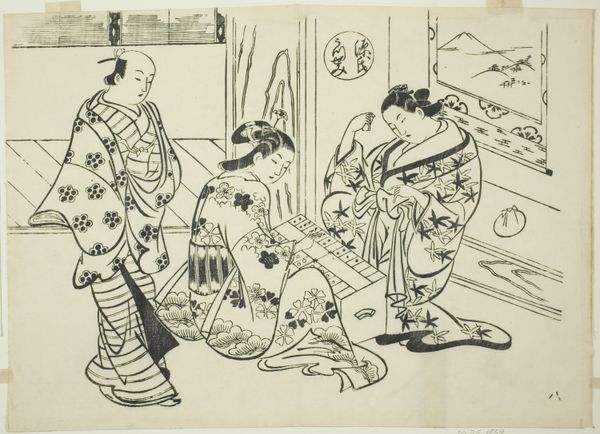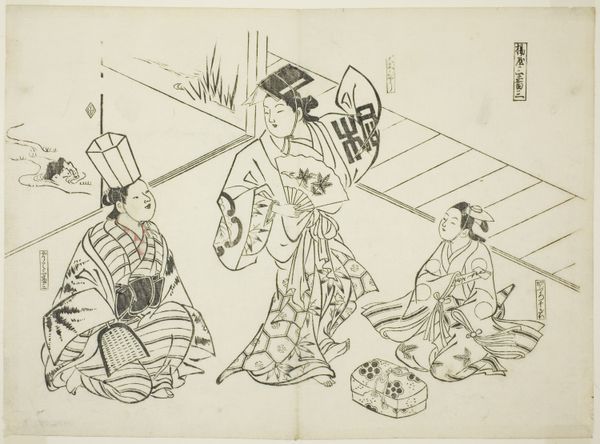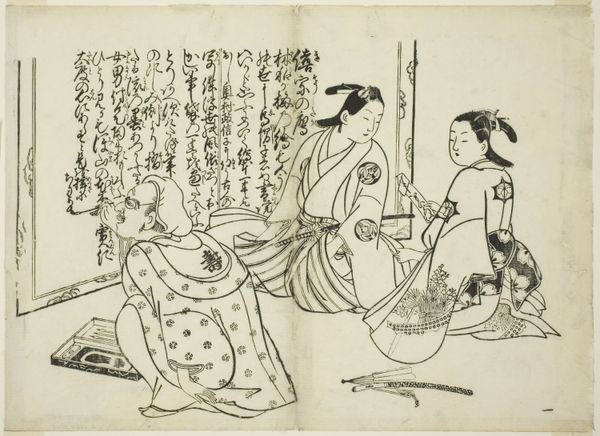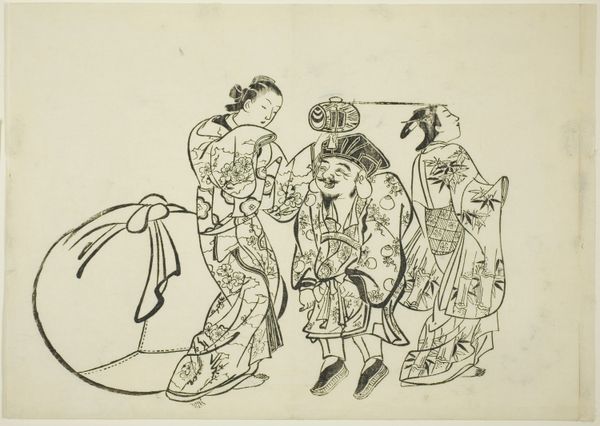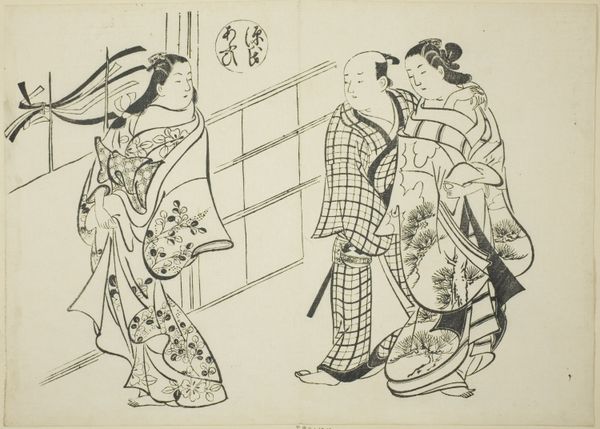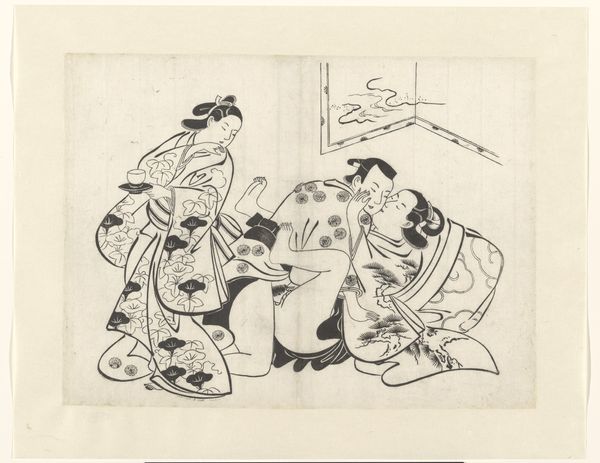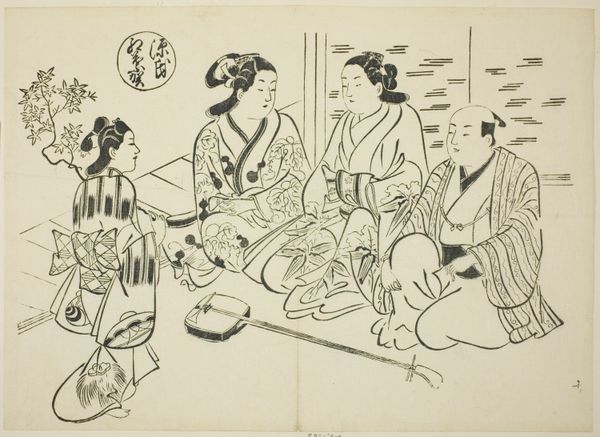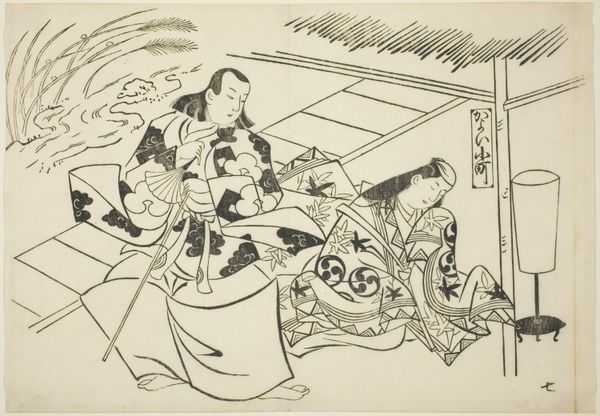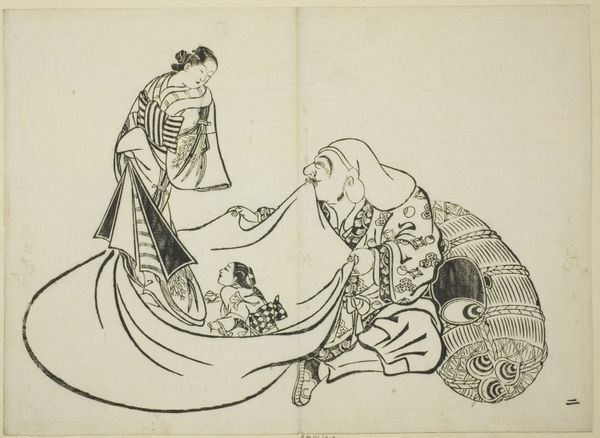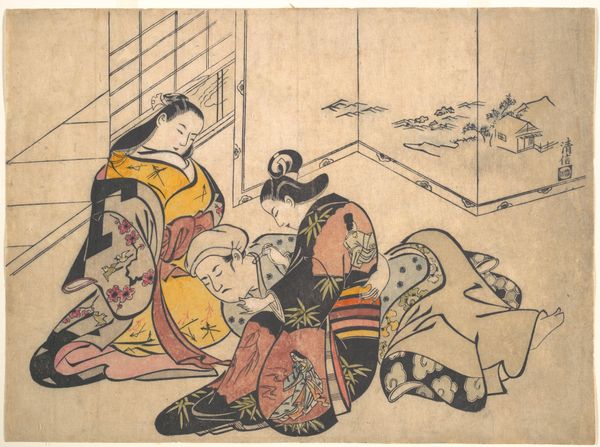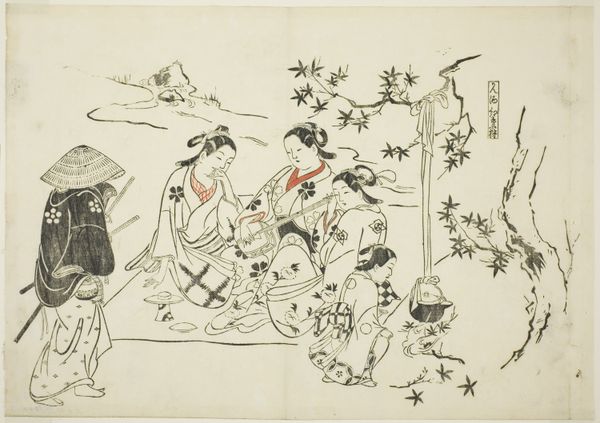
The Kiritsubo Chapter from "The Tale of Genji" (Genji Kiritsubo), from a series of Genji parodies c. 1710
0:00
0:00
print, paper, ink, woodblock-print, woodcut
#
ink drawing
#
narrative-art
# print
#
asian-art
#
ukiyo-e
#
paper
#
ink
#
woodblock-print
#
woodcut
#
genre-painting
Dimensions: 37.3 × 38.3 cm
Copyright: Public Domain
Editor: Here we have Okumura Masanobu's woodblock print, "The Kiritsubo Chapter from 'The Tale of Genji'", created around 1710. The stark lines and simple composition give it a rather austere feel, despite the subject matter. What do you see in this piece? Curator: Beyond its aesthetic simplicity, I see a potent commentary on gender roles and societal expectations within the Edo period. Masanobu cleverly uses the well-known "Tale of Genji" to subtly critique the constraints placed upon women. Notice how the women are active agents in the composition, moving and interacting, whereas the man is more static, confined almost, by the patterned blanket? Editor: Yes, now that you mention it, the women's garments seem more dynamic and detailed than his robe. Curator: Precisely. It's not just a matter of aesthetics. Think about the historical context. The Genji Monogatari was revered, its characters idealized, and by using that framework, Masanobu can comment on societal inequalities, especially how women had limited freedoms and often faced objectification even within powerful narratives like the Tale of Genji. Is this a reflection, or an intentional subversion? Editor: That makes me rethink my initial reaction. I’d seen it as straightforward, but the "parody" in the title hints at this subversive intent. Curator: The beauty of ukiyo-e lies in these layers. They served as both popular entertainment and a platform for artists to subtly address the social issues of the day. Are the garments coded signs? Are they an allegory of some sort? Think about the position of each of the figures: what social norms are they expressing, and potentially upending? Editor: So, reading this image requires understanding not only the visual elements, but also the cultural codes embedded within them. I appreciate that a lot, thank you. Curator: Exactly! Art serves as an incredibly valuable mirror reflecting—and refracting—the societal norms, attitudes, and often injustices of a particular moment in time. That is the potential for art and art history to speak truth to power.
Comments
No comments
Be the first to comment and join the conversation on the ultimate creative platform.
